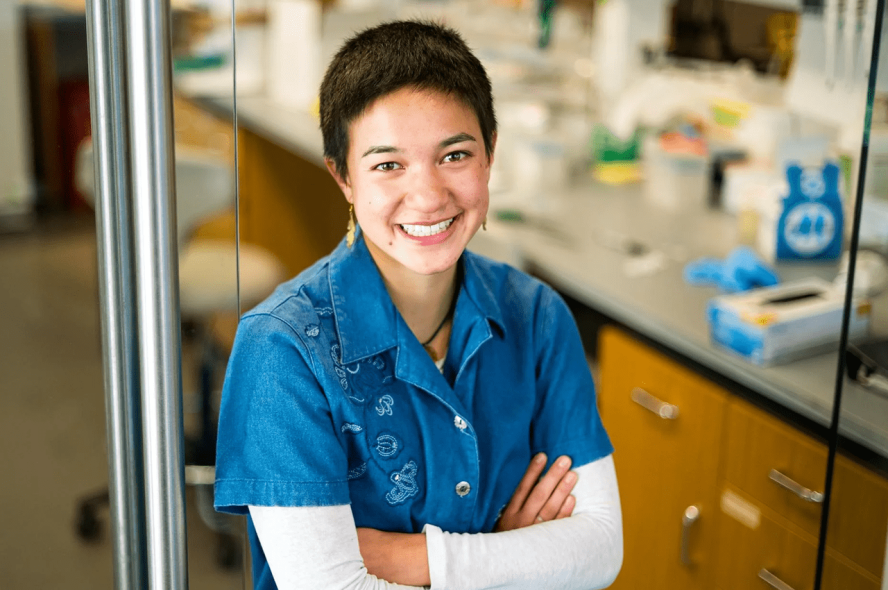Where engineering pathways begin: Katie Lew, E25

Katie Lew is pursuing a degree in biomedical engineering and a minor in studio art. As a SEPA STEM Fellow, she was a mentor to high school students from communities traditionally underrepresented in STEM. She also is an undergraduate research assistant for Madeleine Oudin, associate professor of biomedical engineering. Lew brings her love of art to bear on graphics for the Tufts University Social Collective and shares her enthusiasm for the outdoors with fellow students as community director of the Tufts Mountain Club and orientation leader for the Tufts Wilderness Orientation.
“I came to Tufts planning to take up engineering. I loved painting, but I also really liked structures and sculptures; I liked to find myself at the intersection of these ideas, I liked the process of making something, the process of iterating and redesigning. I also liked math and science. I thought, OK, engineering marries these approaches to problem solving. It was kind of a shot in the dark in terms of whether that theory was going to work, but I wanted to see what would happen if I brought them together.
“The first engineering course I took was the biomedical track of Introduction to Engineering [EN1, Innovation in Biomedical Engineering co-taught by David Kaplan, Stern Professor in Engineering, and Fio Omenetto, Frank C. Doble Professor in Engineering]. I loved that class. It touched a lot upon biomimicry. That really clicked with me. I was pretty sold on biomedical after EN1. I appreciate how they tapped into this idea of looking to nature and to the Earth as you create new systems and designs.
“Much of my focus is on pulling things from all these different corners of art and engineering. One specific example is from my work in the Oudin Lab, where I do a lot of confocal imaging. This microscope takes high resolution images of cells that allow us to measure the fluorescence, and therefore expression, of certain proteins. This helps us understand if drugs may be converting healthy cells to cancer-associated cells. But there's also just the beauty of looking at the cells.
“That’s one example of that intersection of art and engineering. In art, you are painting, and you have a plan, but you need to revise and you kind of have a solution you want to solve or a message you want to send. Like engineering, it’s iterative. Similarly, with these microscopy experiments you are trying to understand and refine your research.
“That is why I was drawn to engineering: to do art and engineering in tandem and deeply develop those skills. I have a knowledge of the scientific process, and techniques and technologies to employ, but the question is: How do I combine them? Just seeing what's going to happen when I put them together is exciting.”
Read more student profiles in Where Engineering Pathways Begin by Laura Ferguson/Tufts Now.